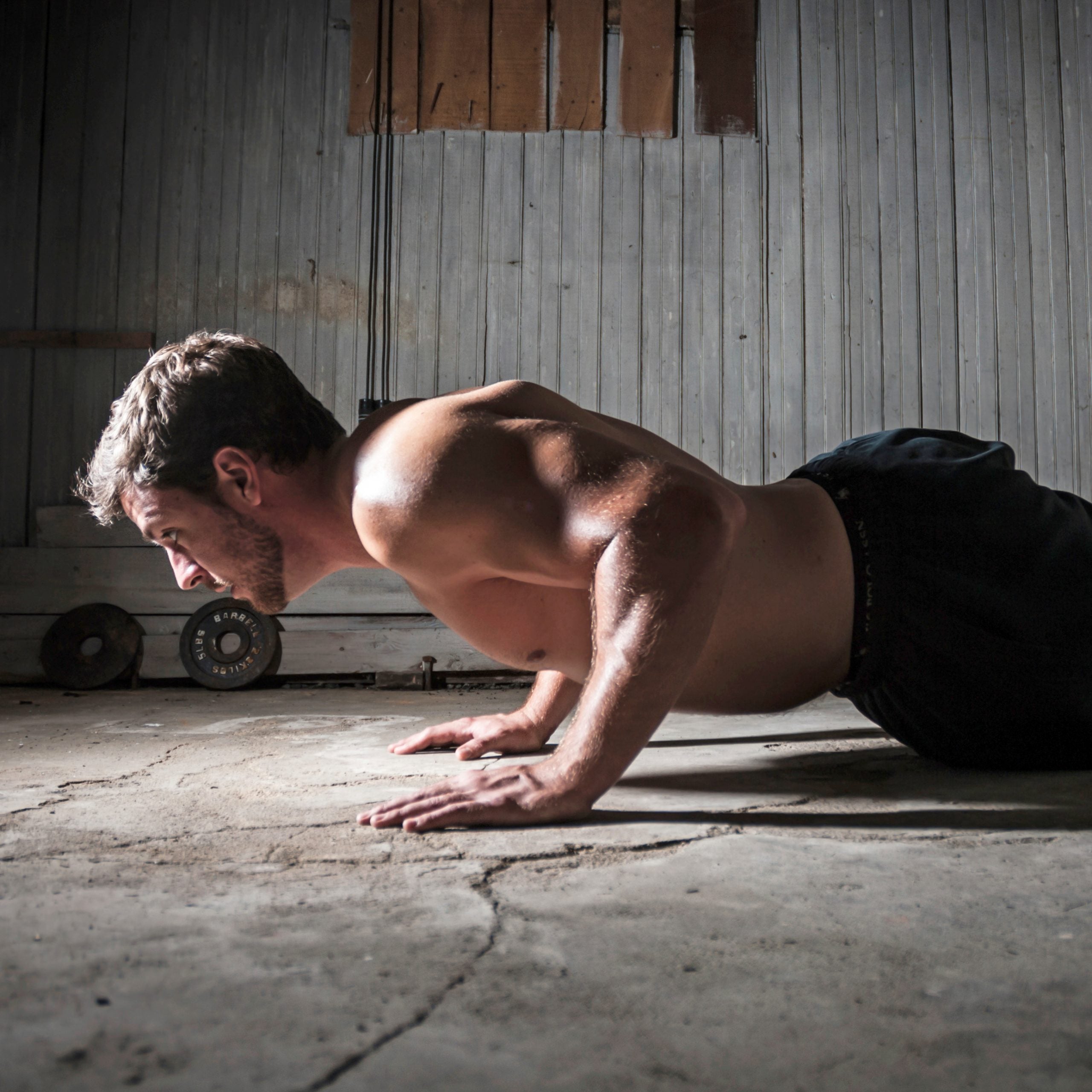For 19-year-old college student , the light-bulb moment came during a phone call from his dad. It was March 14, 2004, four days after Ferguson’s arrest for allegedly Columbia Tribune sports columnist Kent Heitholt. “I know you’re innocent, but while you’re in there, I can’t protect you,” his dad’s said. “You have to do everything you can to make yourself stronger, faster, and smarter to survive.”
Ferguson hung up the phone and headed back to his cell at the Boone County Jail, an austere brick building just 15 minutes north of where he graduated from high school in Columbia, Missouri, the year prior. Now he was suddenly living among men who were at least theoretically predatory in nature. He knew he didn’t belong there. He also knew his dad was right. He started with push-ups.
“You’re reminded every day of how weak you are as a human being and if anything did happen, help would be too late,” Ferguson says of life in prison. He would spend nearly a decade behind bars before his conviction was vacated, the legal term for voiding a previous judgment, due to recanted witness testimony, admissions of perjury, accusations of prosecutorial misconduct, and the absence of physical evidence matching Ferguson to the crime scene. “My goal became to get as big as I could as fast as I could to show people not to mess with me—I’m not a fighter, but I wanted to make sure I could survive a few rounds if I had to—it was either that or potentially ceasing to exist.”
So the scrawny college freshman became a student of health and fitness. Push-ups and sit-ups in his cell—sometimes as many as 1,000 a day—kicked off a calisthenics program he regularly performed. Like an anxious zoo animal, he paced the length of his 50-foot cage, doing 25 push-ups, walking back, doing another 25 push-ups, and so forth. He huffed out dips on a cinderblock half wall and pull-ups on the back of a staircase. He jury-rigged a hefty, plastic coffee jug by filling it with water in the showers and wrapping a laundry bag through the handles to do curls.
“You have to do everything you can to make yourself stronger, faster, and smarter to survive.”
When he wasn’t working out, he was reading everything he could get his hands on—from books like Viktor Frankl’s , to self-help guides like by Eckhart Tolle, to any sports and fitness magazines available. “I had this intense fear of knowing I was very alone in there and that I was surrounded by a lot of bad people who didn’t care about anything,” says Ferguson. “I was the guy who was in incredibly good shape who read all day, so people thought, ‘He’s not normal; I don’t want to mess with him.’ It was important to my survival both mentally and physically.”
While his fitness quest began as an act of self-preservation, it evolved into a routine Ferguson hoped would prepare him for the outside world, even though he didn’t know when, or if, he’d be released. “I began asking myself, ‘Do I want to be the same person when all this started and view the time I spent in prison as lost years because I didn’t want to put in that daily effort?'” he says.
He was released on November 12, 2013, at the age of 29. Since then, he has earned his NASM personal trainer certification and thrown himself into Spartan races, competing at the in Vermont this past September. “If you’re going to run, run like you’re a kid in the woods,” he says of the freedom he feels running in wide-open spaces and over obstacle-laden terrain.
The fitness and life lessons Ferguson learned in prison are packed into his new book, , out from Penguin books on January 2.
Below, Ferguson shares his four most important fitness revelations:
Set Goals
“One reality in life is that we have to constantly fight for ourselves, which makes it easy to lose that inner peace and willpower,” Ferguson says. “That’s why you need to set goals for yourself and write them down in order to achieve that balance.”
Check Yourself
“You need to ask yourself, ‘How do I want to feel? How do I want to look?’ And then admit: ‘Here’s what I’ve been doing and it’s not enough,'” Ferguson says. “Living a healthy lifestyle is going to make you a better person in other parts of your life, so it’s all about understanding what you need to be happy.”
Be Consistent
Ferguson admits sticking to a regular diet and exercise routine was easier in prison than it is now that he’s free. “The reality is that there are a lot of distractions,” he says. He has ten years of catching up to do with family and friends, not to mention the fact that he spent a decade craving a good cheeseburger, which he can now have whenever he wants.
“This last year I’ve moved four times and have traveled a lot, but even though my workout program is less regular than it was in prison, every day I make sure to do things like push ups, lunges, and squats,” he says. “When I’m with family all day, I try to encourage everyone to at least get out for a walk to be active and enjoy nature together.”
Attitude Is Everything (Not Just an Inspirational Poster)
“I learned the importance of not being a victim to your circumstances,” he says. “We all have our own tragedies—a lot of people think my struggle has been worse, but life is full of terrible situations. You have to keep pushing and you’ll eventually come through the other end.”


